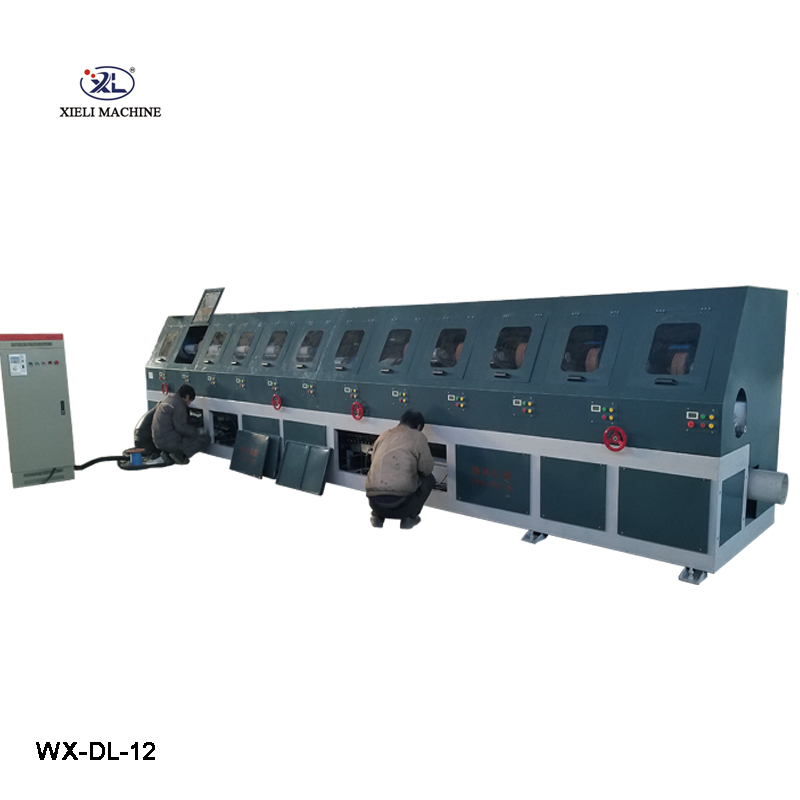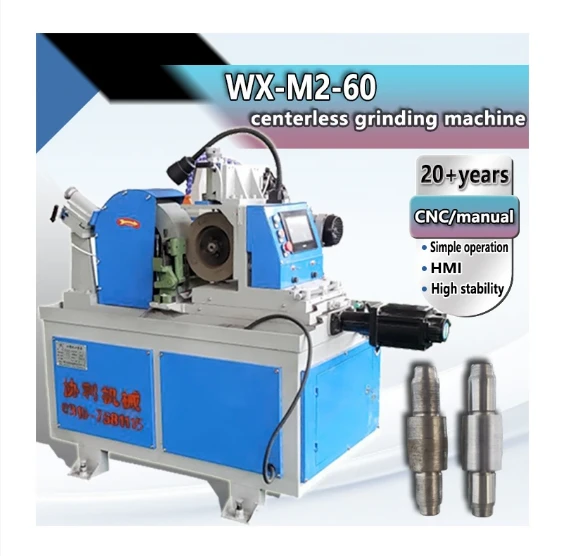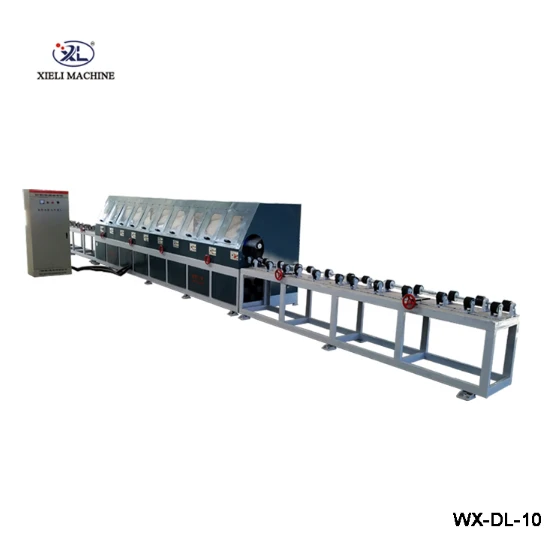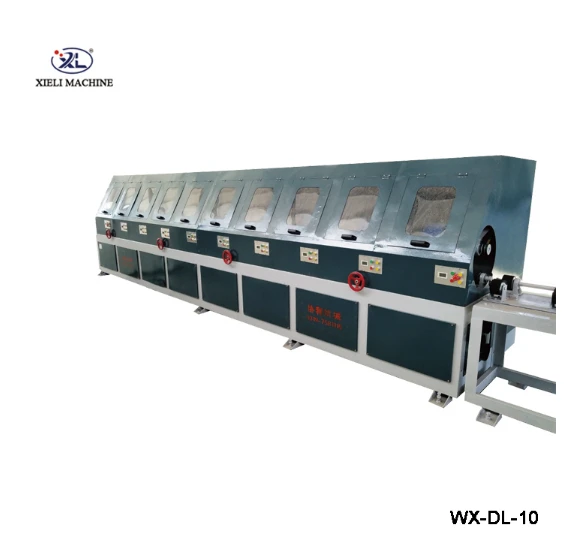In the world of metalworking and manufacturing, achieving a flawless, mirror-like finish is often the mark of quality. Whether for aesthetic purposes or functional requirements, tube polishing machines are the essential tool in achieving this level of perfection. These machines are designed to deliver an ultra-smooth surface on a variety of materials, particularly metal tubes and pipes.
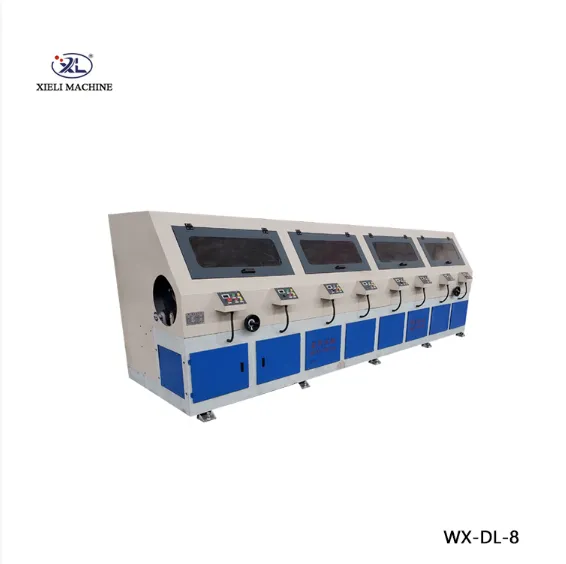
The Role of Tube Polishers in Modern Manufacturing
A tube polisher is a versatile tool designed to smooth out the surface of metal tubes, ensuring they meet strict quality standards. These machines work by utilizing abrasive belts or polishing pads to gradually refine the surface of the tube, removing imperfections and achieving a high-gloss finish. While tube polishing machines can handle various tube types, they are particularly well-suited for working with materials like stainless steel, aluminum, and brass.
The versatility of tube polishers makes them indispensable for industries such as automotive, construction, and furniture manufacturing, where appearance is as important as functionality. With the ability to process a variety of shapes, sizes, and finishes, tube polishing machines provide manufacturers with the flexibility to meet the diverse needs of their clients.
Enhancing Precision with Round Pipe Polishing Machines
One of the most common types of tube polishing machines is the round pipe polishing machine. These machines are specifically designed for polishing cylindrical pipes and tubes, giving them a smooth and uniform surface. The precision offered by the round pipe polishing machine is vital in industries like HVAC and plumbing, where pipes must meet exact specifications to ensure proper function and safety.
The round pipe polishing machine typically uses a series of abrasive polishing belts that rotate around the pipe, gradually smoothing the surface. Depending on the material and finish required, different levels of abrasives can be used. This method of polishing helps achieve the desired finish while also maintaining the integrity of the pipe’s structural strength.
Stainless Steel Pipe Polishing: A Step Towards Perfection
For industries that require high corrosion resistance and a sleek finish, stainless steel pipe polishing machines are indispensable. Stainless steel is a popular choice for pipes and tubes due to its durability, resistance to rust, and aesthetic appeal. However, achieving a perfect mirror finish on stainless steel is challenging, which is where the stainless steel pipe polishing machine comes in.
These machines use a combination of abrasive polishing tools and compounds to refine the surface of stainless steel tubes. The stainless steel pipe polishing machine ensures that the pipes not only have an appealing appearance but also meet the stringent hygiene and quality standards required in industries like food processing, pharmaceuticals, and chemical manufacturing. The polished surface helps prevent the buildup of dirt and contaminants, making it easier to maintain the pipe's cleanliness.
Cylindrical Polishing Machines: Versatility in Tube Finishing
Another key player in the tube finishing process is the cylindrical polishing machine. Unlike traditional polishing tools, which focus solely on the outer surface, cylindrical polishing machines are designed to handle the unique requirements of cylindrical objects. These machines are versatile, allowing manufacturers to polish a variety of tube sizes and materials while ensuring consistent surface finishes across long production runs.
By incorporating different polishing belts, wheels, and pads, the cylindrical polishing machine can achieve finishes ranging from matte to high gloss. This flexibility makes it a must-have for industries such as automotive manufacturing, where tube surfaces must meet both functional and aesthetic standards.
The Benefits of Using Tube Polishing Machines in High-Volume Production
For manufacturers involved in high-volume tube production, tube polishing machines provide several significant advantages. These machines are designed for efficiency, reducing manual labor and significantly increasing production speed. By automating the polishing process, manufacturers can maintain consistent quality across thousands of pieces without sacrificing precision.
Additionally, tube polishing machines are equipped with features that allow for easy adjustment of polishing parameters, ensuring that the desired finish is consistently achieved. For companies that need to polish a wide range of materials, from stainless steel to copper, these machines offer the flexibility to switch between different abrasive types and speeds, optimizing production processes.
As the demand for high-quality, precision-engineered products continues to grow, the role of tube polishing machines in achieving mirror finishes will only become more prominent. By investing in these advanced tools, manufacturers can not only improve the appearance of their products but also meet the functional and regulatory standards required in industries that rely on polished metal components.

